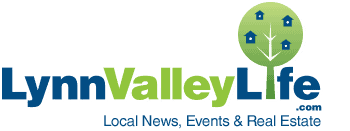The tragic events of March 27 at Lynn Valley Village have devastated our community. From the victims to the helpers to the neighbourhood at large, we have experienced trauma. As a community we need to keep moving.
Community broken apart
 The attack will have impacts in the community far beyond those that were there, said Registered Clinical Counsellor and North Van mom Lindsey Jespersen. Being aware of vicarious trauma will help you deal with the events.
The attack will have impacts in the community far beyond those that were there, said Registered Clinical Counsellor and North Van mom Lindsey Jespersen. Being aware of vicarious trauma will help you deal with the events.
“The closer something is to home, the more likely you are to experience feelings of trauma,” she said. “In this case how many people were in that square? Or around the square? Or know someone who was there, witnessed it or were a part of it? And that is why the community has been rocked.”
It is scary to face an event so close to home.
“It is protective for humans to think ‘Oh that’s tragic, but that it would never happen here,’ and something like this highlights vulnerability in a much closer to home way.”
Jespersen emphasizes honesty when talking about the events.
“There is a fine line between reassurance that this doesn’t happen – that people are good but you can’t oversell the idea that life is certain or that tragedy can’t happen,” she said. “You want to be able to say scary things can happen, sad things can happen – that is a part of life but as humans, we are incredibly resilient, we band together and are able to overcome very difficult times.”
The heroes and the resistors
When discussing events Jespersen encourages families to focus on the range of good that was also present at the tragedy.
“You are not trying to pretend the dark didn’t happen – both the light and the dark exist simultaneously,” she said. “If you narrow in on the cruelty of one person that is another risk factor for post-traumatic stress and that is a very dark rabbit hole to go down and get stuck in. Wherever there is tragedy and trauma there are acts of resistance, heroism, courage.
“They don’t have to be grand acts. If a little kid knew to run and hide – that is resistance. It is not just the person who does something huge that will be on the news; it is also all the small ways of everyone involved and the ripple effect into the community and the things they could do to counter what happened. The stores that called 911 or the restaurant that brought someone in. Those are examples of acts of resistance and courage.”
With the sheer numbers of people in the busy plaza that day, Jespersen encourages people who were present to be kind to themselves.
“The people who were there and don’t feel they did something grand can stew in the regret – that is where the important piece is to recognize all those small things are heroic as the big thing.”
As we all reflect on the events, there is importance in recounting the big, small and medium heroic acts and the positive actions that are continuing now.
Community rally
As the community continues to function in pandemic restrictions many of the grieving actions we do collectively aren’t an option. There cannot be any group vigils or gatherings.
“Covid makes it tricky,” said Jespersen. “We were already feeling protective – and we see the community rallying already. We are already seeing GoFundMe accounts, the flowers and candles. The community can find ways to do something together and that will help overcome the trauma. Eventually, some kind of ritual or something to reclaim the space and make it a safe place will help. The space is now associated with trauma and we need it associated with coming together again.”
In the coming days and weeks there will be creative solutions to collective action. It can be done on social media or via Zoom and still have the beneficial effects of a group gathering, she said.
Coming to grips with trauma
The tragedy may be affecting those beyond the victims, bystanders and responders. Checking in with yourself and those you care about is important.
“The understanding of resilience and resilience in the face of tragedy is what helps people overcome the post-traumatic stress response,” said Jespersen. “It is helplessness, fear, and avoidance that promotes a post-traumatic stress response.”
Issues to consider:
- Be careful with avoidance – “If you avoid too long it reaffirms the fear. In the face of anxiety, people avoid but it isn’t a long term strategy especially if unexpected events happen.”
- Intrusive thoughts or visuals – “Interrupt those as much as you possibly can with anything that is a quick healthy distraction. Jumping jacks, going for a walk, turning on the tv until the thought is gone.”
- Too much curiosity – “Try not to be too interested in hearing all the details. It’s kind of like rubber-necking at a car accident – we are all guilty of it. Once you see something you can’t unsee it. You are more prone to a trauma response with the more details you have. Most people have been in there so you can recall intrusive details. This is where thinking of the helpers can be a distraction.”
- Get moving – “You can feel it in your body when you are stuck in this and that is when it is more important to get outside or get moving.”
Resources
The events of the weekend will have lasting impacts and some people will need support. If you were present at the event, a victim or the family member of a victim, there is funding available through Victim Services to help cover the cost of counselling, she said. There are also private counsellors specializing in trauma and organizations like Hollyburn Family Services and the Foundry. LynnValleyLife also gathered local health resources in a previous post. The North Shore Emergency Management Office is offering counselling services at Karen Magnussen Rec Centre daily, 11am-6pm through April 4th.
Looking for more?
There’s always something fun and exciting happening in Lynn Valley. Check out our Community Events Calendar or learn more about Local Activities, Mountain Biking or Hiking and Walking Trails.

